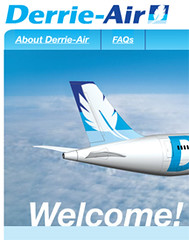The average lifespan of a tagline is about five years. And while there are some short and long exceptions, five years seems to be about how long it takes for marketers and advertisers to call for change, even when they don’t need to.
Why?
That’s the question Citibank seems to be asking as it has decided to revive its "Citi never sleeps" tagline. According to AdWeek, Lisa Caputo, CMO for Citi, said that testing with consumers "confirmed its strong recall and favorability. And one of the great benefits is we already own it; it's trademarked." (Personally, I like the Live Richly series better.)
The article also speculates that the trend to return to old taglines could be tied to any number of reasons: harkening back to better days, capitalizing on boomer nostalgia, or admitting that creativity is diminishing.
While there is some truth to all three points presented by AdWeek’s Gregory Solman, it seems to me that many companies are simply realizing that they had a great tagline and were too quick to give it up with the next big advertising campaign.
Sure, change can be good, but it really depends on how the tagline is employed and whether or not it ever made a powerful connection to the brand like “Diamonds are forever” “Just do it” and “Good to the last drop” have done.
There are others. “Where’s the beef?” and “Look Mom! No cavities!” also come to mind. But unlike those earlier mentioned, these taglines did need change because they were much more campaign-centric despite the fact that neither Wendy’s nor Crest has ever succeeded in introducing something stronger.
It’s not for lack of trying. In 2004, Procter & Gamble Co. invested $100 million to rebrand Crest, which included a “healthy, beautiful smiles for life” positioning statement. But frankly, the tagline was just too generic to connect.
So when does a tagline need to change?
It depends on the tagline.
At the end of a campaign. Sometimes it might be painful, but Wendy’s and Crest both had campaign-reliant taglines that had to end with the campaigns.
At the end of an era. "Does she ... or doesn't she?” is anther classic tagline, but it’s not timeless. It wouldn’t really resonate today unless it was a nostalgic campaign but only because it was brilliantly attached to the era.
A shift in direction. This was the case for Wal-Mart when it shifted from “Always low prices. Always.” to “Save money. Live better.” While the reasoning was sound because it represented a shift in the company, the new tagline still doesn’t stick. Miller Lite is attempting to do the shift as well.
Because it sucks. Mobile once sported the tagline “We want you to live." Ho hum. Enough said.
Never. When it works, assuming it is not tied to a campaign or era, then it doesn’t need to change for the sake of change. For example, American Express still scores higher with “Don’t Leave Home Without It” than the more generic “Do more.” or “My life. My card.” or “Are You A Cardmember?”

Why?
That’s the question Citibank seems to be asking as it has decided to revive its "Citi never sleeps" tagline. According to AdWeek, Lisa Caputo, CMO for Citi, said that testing with consumers "confirmed its strong recall and favorability. And one of the great benefits is we already own it; it's trademarked." (Personally, I like the Live Richly series better.)
The article also speculates that the trend to return to old taglines could be tied to any number of reasons: harkening back to better days, capitalizing on boomer nostalgia, or admitting that creativity is diminishing.
While there is some truth to all three points presented by AdWeek’s Gregory Solman, it seems to me that many companies are simply realizing that they had a great tagline and were too quick to give it up with the next big advertising campaign.
Sure, change can be good, but it really depends on how the tagline is employed and whether or not it ever made a powerful connection to the brand like “Diamonds are forever” “Just do it” and “Good to the last drop” have done.
There are others. “Where’s the beef?” and “Look Mom! No cavities!” also come to mind. But unlike those earlier mentioned, these taglines did need change because they were much more campaign-centric despite the fact that neither Wendy’s nor Crest has ever succeeded in introducing something stronger.
It’s not for lack of trying. In 2004, Procter & Gamble Co. invested $100 million to rebrand Crest, which included a “healthy, beautiful smiles for life” positioning statement. But frankly, the tagline was just too generic to connect.
So when does a tagline need to change?
It depends on the tagline.
At the end of a campaign. Sometimes it might be painful, but Wendy’s and Crest both had campaign-reliant taglines that had to end with the campaigns.
At the end of an era. "Does she ... or doesn't she?” is anther classic tagline, but it’s not timeless. It wouldn’t really resonate today unless it was a nostalgic campaign but only because it was brilliantly attached to the era.
A shift in direction. This was the case for Wal-Mart when it shifted from “Always low prices. Always.” to “Save money. Live better.” While the reasoning was sound because it represented a shift in the company, the new tagline still doesn’t stick. Miller Lite is attempting to do the shift as well.
Because it sucks. Mobile once sported the tagline “We want you to live." Ho hum. Enough said.
Never. When it works, assuming it is not tied to a campaign or era, then it doesn’t need to change for the sake of change. For example, American Express still scores higher with “Don’t Leave Home Without It” than the more generic “Do more.” or “My life. My card.” or “Are You A Cardmember?”






















